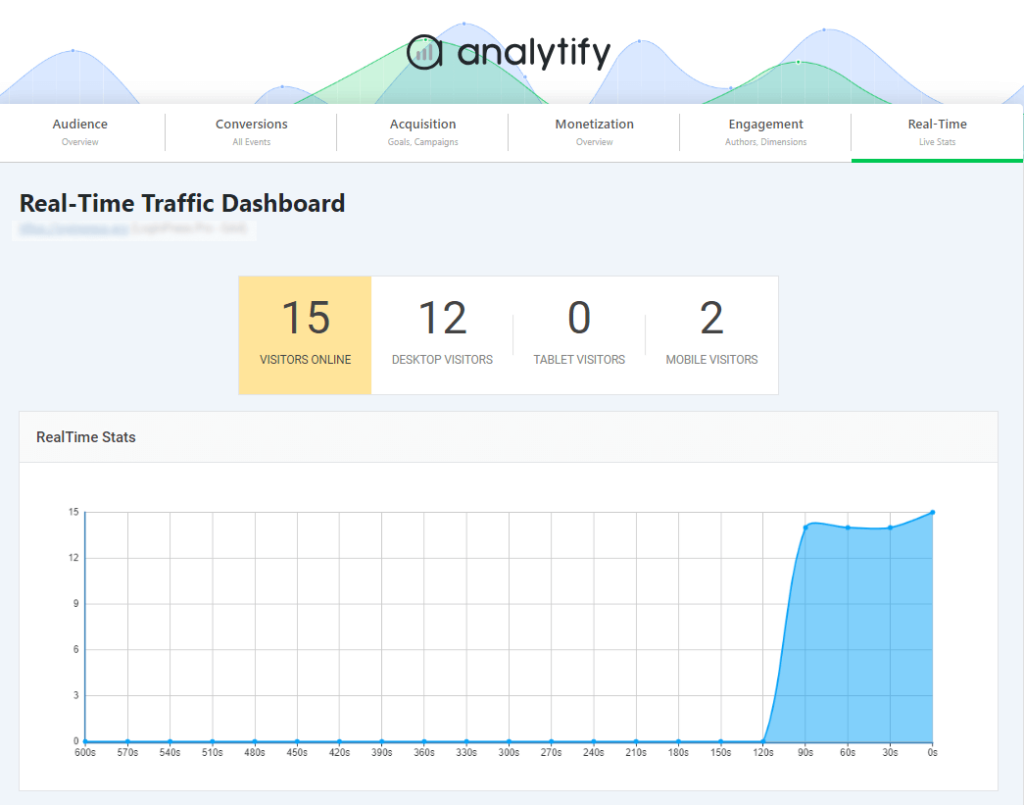
Mixpanel vs Google Analytics (Detailed Comparison 2025)
Are you struggling to decide between Google Analytics and Mixpanel for your business? You’re not alone.
Choosing the right tool from Mixpanel vs Google Analytics can significantly impact your efforts to optimize your website traffic and understand user behavior. We’ll explore why this comparison is crucial for digital marketers, product managers, and business owners in the tech and e-commerce sectors.
We’ll explain each tool, why it is essential, how to use it effectively and provide tips for getting started.
Let’s dive right in!
Mixpanel vs Google Analytics (TOC):
Overview of Google Analytics

Google Analytics is a powerful web analytics tool offered by Google that enables website owners and businesses to track and analyze their website traffic in great detail. This powerful tool collects data from your website and presents it in detailed reports, allowing you to see how visitors interact with your site.
It tracks various metrics, including page views, session duration, bounce rates, and user demographics. These insights are crucial for optimizing user experience and tailoring marketing strategies to meet the needs of your audience. By providing comprehensive information about user behavior, traffic sources, and engagement metrics, Google Analytics helps businesses understand how visitors engage with their websites. The platform offers customizable dashboards and reports, making it easy to visualize data and gain actionable insights.
It works seamlessly with Google Ads, Google Search Console, and Google Tag Manager, enabling you to track the performance of your marketing campaigns and improve your SEO efforts.
To further simplify the use of Google Analytics, tools like Analytify integrate directly with your WordPress site, bringing Google Analytics data into your dashboard. Analytify offers an intuitive interface that makes viewing and interpreting Google Analytics reports easy. The free version of Google Analytics, coupled with tools like Analytify, makes powerful analytics accessible to businesses of all sizes.
Overview of Mixpanel

Mixpanel is a product analytics platform designed to help businesses understand how users interact with their products or applications through detailed user behavior tracking. Unlike traditional web analytics tools that focus on page views and traffic metrics, Mixpanel delves into the specific actions users take on websites and mobile applications, such as clicks, sign-ups, purchases, and other events.
It provides in-depth insights into user actions, allowing businesses to measure key metrics, identify user segments, and analyze user journeys. With features like event tracking, funnels, retention analysis, and cohort analysis, Mixpanel helps product teams make data-driven decisions to improve user experience and drive product growth.
Essentially, Mixpanel empowers businesses to understand how users engage with their products, identify areas for improvement, and optimize features based on user behavior.
Similarities Between Google Analytics vs Mixpanel
Despite their distinct features and focus areas, Mixpanel and Google Analytics share several similarities. That makes them both essential tools for businesses aiming to hold data analytics for growth. Here are some key similarities in Google analytics and mixpanel features:
| Feature | Google Analytics | Mixpanel |
| Event Tracking | Monitor user interactions with your website | Tracks user interactions with your product or website |
| User Segmentation | Create segments based on user demographics and behavior | Enables segmentation based on user attributes and behavior |
| Funnel Analysis | Analyze user journeys through conversion funnels | Assesses user pathways through conversion funnels |
| Retention Analysis | Measure user retention over time | Measures how well users are retained over time |
| Custom Reporting | Build custom reports to meet specific needs | Build custom reports to meet specific needs |
| A/B Testing | Facilitates A/B testing for website optimization | Supports A/B testing for feature optimization |
| Real-Time Data | Delivers real-time information into website traffic | Provides real-time knowledge into user behavior |
| Data Export | Enables data export for deeper analysis | Allows for data export to conduct further analysis |
Differences Between Mixpanel vs Google Analytics
While sharing some similarities, Google Analytics 4 vs Mixpanel handle different aspects of analytics, each excelling in specific areas. Here are the key differences:
| Feature | Google Analytics | Mixpanel |
| Core Focus | Website traffic and marketing analytics | Product analytics and user behavior |
| User-centric Analysis | Primarily aggregate data | Detailed user-level data |
| Event Tracking | Event tracking with custom properties | Flexible event tracking with custom properties |
| User Identification | Basic user identification (user ID and cookies) | More focus on individual user identification |
| Data Visualization | Focus on standard reporting and dashboards | Focus on visualizations for product analysis |
| Industry Focus | Broadly applicable across industries | Often preferred for product-centric companies ( mobile apps) |
| Pricing | A free tier with paid options for advanced features | Primarily subscription-based |
Would you like to delve deeper and explore which tool might be best for your business?
Mixpanel vs Google Analytics (A Complete Comparison)
Utilize Mixpanel vs Google Analytics 4 to see how GA4’s broad data collection and reporting capabilities compare to Mixpanel’s in-depth user behavior analysis and event tracking. Consider the following points:
Ease of Use
Both Google Analytics and Mixpanel offer robust analytics capabilities, but their ease of use varies significantly.
Google Analytics
Google Analytics generally boasts a user-friendly interface that is familiar to many users due to Google’s other products. It is usually easier to use for beginners and those with basic analytics needs. The availability of a free version allows businesses of all sizes to experiment and learn without upfront costs. Extensive online documentation, tutorials, and communities provide support for users.
While advanced analytics and custom reporting can be complex for beginners, the platform often provides vast data, which can overwhelm new users.
Mixpanel
Mixpanel is designed with product teams in mind, offering a more streamlined interface for tracking specific user actions and behaviors. While it requires some technical knowledge, Mixpanel allows for high levels of customization to fit specific business needs—a more complex setup for tracking events and defining metrics.
The platform offers a variety of intuitive visualizations to help users understand complex data. Compared to Google Analytics, Mixpanel might have a steeper learning curve, especially for users without a strong analytics background. Better suited for product analysts with a deeper understanding of analytics.
Google Analytics is generally considered easier to use for most users. However, the best choice depends on your needs and the team’s analytical expertise.
Tracking Capabilities
Tracking user behavior is essential for understanding customer journeys, optimizing marketing campaigns, and improving product experiences. Mixpanel and Google Analytics offer robust tracking capabilities, but they differ in their approach, focus, and depth of data. Let’s delve into each platform’s tracking capabilities.
Event Tracking
- Google Analytics:
- Primarily focused on website interactions (page views, clicks, etc.).
- Event tracking is available but requires more setup and configuration.
- Offers standard events like button clicks, video plays, and file downloads.
- Mixpanel:
- It is built around event tracking, allowing for granular tracking of user actions.
- Flexible event definitions with custom properties and parameters.
- Enables tracking of complex user flows and interactions.
User Properties
- Google Analytics:
- Limited user properties, primarily focused on demographics and custom dimensions.
- Challenges in tracking user-specific attributes in detail.
- Mixpanel:
- Extensive user property capabilities allow for detailed user profiles.
- Track custom attributes like purchase history, signup date, or relevant user information.
User Behavior Analysis
- Mixpanel: Advanced features like user journeys, path analysis, funnels, retention, and cohort analysis.
- Google Analytics: Audience segmentation, behavior flow analysis.
Data Granularity
- Google Analytics:
- Primarily aggregate data, providing insights at a session or user level.
- Less granular compared to Mixpanel.
- Mixpanel:
- Offers deep-level user-level data, allowing for detailed analysis of individual user actions.
- Enables tracking of events, properties, and user identities.
Integration Capabilities
- Google Analytics:
- Integrates with Google’s marketing platform (Google Ads, Search Console, etc.).
- Offers various third-party integrations.
- Mixpanel:
- Integrates with various tools, including marketing automation, CRM, and customer support platforms.
Enhanced Tracking Capabilities with Analytify
Analytify bridges the gap between Mixpanel’s granular focus and Google Analytics’ broader overview. It provides a user-friendly interface with robust tracking capabilities, making it a suitable option for businesses seeking a balance between complexity and ease of use.
Join 50,000+ beginners & professionals who use Analytify to simplify their Google Analytics!
Here’s how Analytify empowers you with advanced tracking features:
- Event Tracking: With Analytify’s event tracking add-on, you can monitor specific user actions on your website, such as button clicks, video plays, form submissions, and more. This detailed tracking capability allows you to understand how users interact with various elements on your site, enabling more precise optimization efforts.

- Custom User Properties: Analytify allows you to define custom user properties, offering flexibility in tracking and segmenting users based on unique characteristics or behaviors. This feature is particularly useful for understanding the different user groups that visit your site.
- E-commerce Tracking: Analytify provides robust e-commerce tracking capabilities for online stores. It enables you to monitor key metrics like product performance, sales, revenue, and conversion rates directly from your WordPress dashboard.
- Real-Time Analytics: With real-time tracking, Analytify provides immediate knowledge of user activity on your website.

- General statistics are essential for understanding user behavior on your website. They provide details on traffic sources, user engagement, bounce rates, demographics, device usage, and conversion rates. Analyzing these metrics lets you identify how users interact with your site.

By integrating these tracking capabilities, Analytify simplifies the process of gathering and analyzing data and enhances your ability to drive user engagement and conversions.
Pricing
Google Analytics Pricing
The Free Plan Offers core analytics features like audience overview, acquisition, behavior, and conversions. It is ideal for small—to medium-sized businesses.
For more advanced needs, Google Analytics pricing for Google Analytics 360 (the paid version) varies based on specific requirements . Unlike subscription-based analytics platforms like Google Analytics 360 and Mixpanel, Analytify provides a more affordable and cost-effective option with its one-time purchase model.
Analytify understands that website tracking needs vary depending on the size and complexity of your website. That’s why they offer a tiered pricing structure with a free plan and premium options that meet your requirements.
Free Plan
Analytify’s free plan offers basic analytics features. It provides essential tracking functionalities like page views, traffic sources, visitor demographics, and primary real-time traffic data.
Premium Plans
Analytify Pro offers advanced features designed to empower you to understand your website and user behavior better. Here are the available plans:
Mixpanel Pricing
Mixpanel offers a pricing structure based on monthly tracked users and features.
- Free Plan: Up to 20 million monthly events, Basic analytics features. Ideal for startups and small businesses just starting.
- Growth Plan: It starts at $28 per month and allows up to 10k monthly events. It includes advanced analytics, unlimited saved reports, and platform API access.
- Enterprise Plan: Custom pricing based on specific needs For large enterprises with complex analytics requirements.
- Data Pipelines and Group Analytics: Add-on packages are available for additional costs.

Support
Google Analytics
Google Analytics relies heavily on self-service support with an extensive online help center, FAQs, and a vast user community. While direct customer support might be limited, the resources available often suffice for most users.
Additional support resources may be available through the plugin developer for users of specific plugins, such as Analytify with WordPress. Analytify provides robust support within its free plan, including detailed documentation, FAQs, helpful tutorials, and an active community forum.
Mixpanel
Mixpanel typically provides dedicated customer support channels, including email, live chat, or phone support, especially for paid plans. Comprehensive documentation, active community forums, and developer support further enhance its support offerings.
Pros and Cons of Google Analytics
Here is a table highlighting the pros and cons of Google Analytics:
| Features | Pros | Cons |
| Comprehensive Traffic Analysis | In-depth insights into website traffic and user behavior | Primarily focuses on aggregate data rather than individual user behavior |
| Free Version | Robust free version suitable for most small to medium-sized businesses | N/A |
| Integration with Google Ecosystem | Seamless integration with Google Ads, Search Console, and Tag Manager | N/A |
| Customizable Dashboards and Reports | Extensive customization options for dashboards and reports | Complex event tracking setup often requires custom coding |
| SEO Insights | Valuable SEO data, including organic search traffic and site speed metrics | Limited user-centric analysis compared to tools like Mixpanel |
| User-Friendly Interface | Intuitive interface with extensive documentation and support resources | Steep learning curve due to the extensive range of features and data |
| Real-Time Data | Basic real-time data capabilities | Real-time data capabilities are not as robust as some other tools |
| Sampling Issues | N/A | May sample data for large datasets, leading to less accurate results |
Pros and Cons of Mixpanel
Mixpanel features provide a powerful suite of tools for in-depth user behavior analysis and event tracking. However, like any analytics platform, Mixpanel comes with its own set of advantages and limitations. Here is a table highlighting the pros and cons of Mixpanel:
| Feature | Pros | Cons |
| User-Centric Analytics | Focuses on individual user interactions and journeys | Higher cost, especially for advanced features and large datasets |
| Intuitive Event Tracking | Simplifies event tracking with an easy-to-use interface | Steep initial setup and learning curve for non-technical users |
| Real-Time Data | Provides robust real-time data and insights | N/A |
| Advanced Features | Offers features like A/B testing, funnel analysis, and user retention analysis | Complexity can be overwhelming for beginners |
| Mobile App Analytics | Strong capabilities for mobile app analytics, including push notifications and in-app messaging | Limited SEO features |
| Customizable Dashboards and Reports | Advanced visualization and funnel analysis | N/A |
| Integration with Third-Party Tools | Integrates with various third-party applications | Less integration with the Google ecosystem |
| Detailed User Segmentation | Provides advanced segmentation capabilities | N/A |
Mixpanel vs Google Analytics FAQ
1. What is the primary difference between Mixpanel vs Google Analytics 4?
The primary difference lies in their focus. Google Analytics tracks website traffic and aggregates data, such as page views and sessions. Mixpanel, on the other hand, focuses on monitoring individual user actions and events, offering more details about user behavior and engagement.
2. Which tool is better for mobile app analytics?
Mixpanel is generally better for mobile app analytics due to its advanced capabilities in tracking in-app events, push notifications and user engagement. It details how users interact with mobile apps, helping businesses optimize the mobile user experience.
3. When should you use Mixpanel?
Use Mixpanel when you need a deep understanding of:
User behavior within your product
Product performance and feature usage
User retention and churn
How users progress through your product (funnels)
Identifying key moments of value for users
4. Can GA4 and Mixpanel tools be used together?
Many businesses use Mixpanel and Google Analytics together to leverage each platform’s strengths. Google Analytics can provide broad insights into overall traffic and user demographics, while Mixpanel can offer a deep understanding of specific user behaviors and interactions.
5. Which tool is more user-friendly for beginners?
With an intuitive interface and extensive documentation, Google Analytics and Analytify are often considered more user-friendly for beginners. However, Mixpanel also provides a user-friendly interface and valuable tutorials, especially for those focusing on detailed product analytics.
Final Verdict: Mixpanel vs Google Analytics 4
While both Mixpanel and Google Analytics excel in different areas. Mixpanel is required for product analytics and user behavior. If your primary focus is on understanding user interactions within a product or app, Mixpanel could be a valuable addition to your analytics toolkit.
Google Analytics remains the industry standard for understanding website traffic, user acquisition, and overall website performance. Explore Analytify as a user-friendly Google Analytics plugin that simplifies data analysis. By combining the strengths of Google Analytics and Analytify for a streamlined WordPress experience, you can comprehensively understand your audience and optimize your digital strategy accordingly.
Would you like to explore other analytics tools? Consider checking out these comparison articles:
is there anything else you want to know? Leave a comment below, and we’ll be happy to help!




